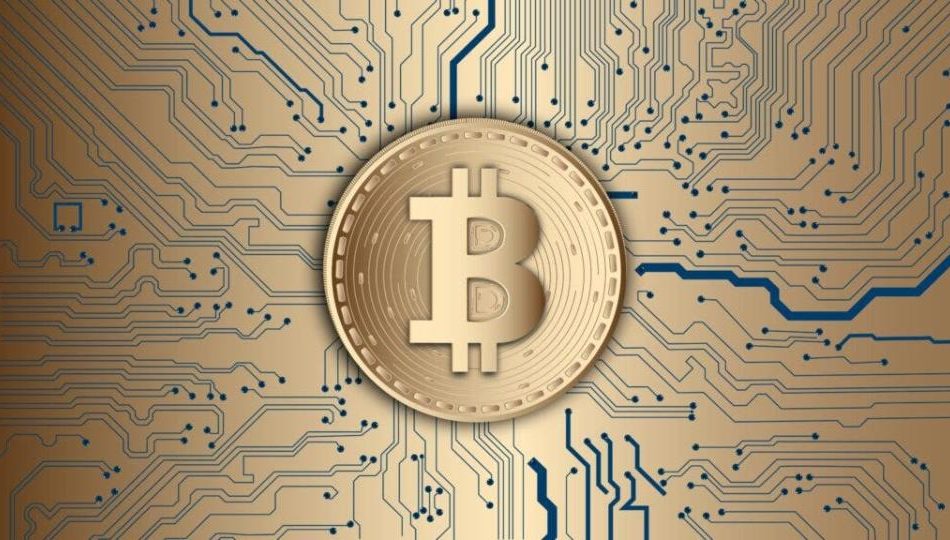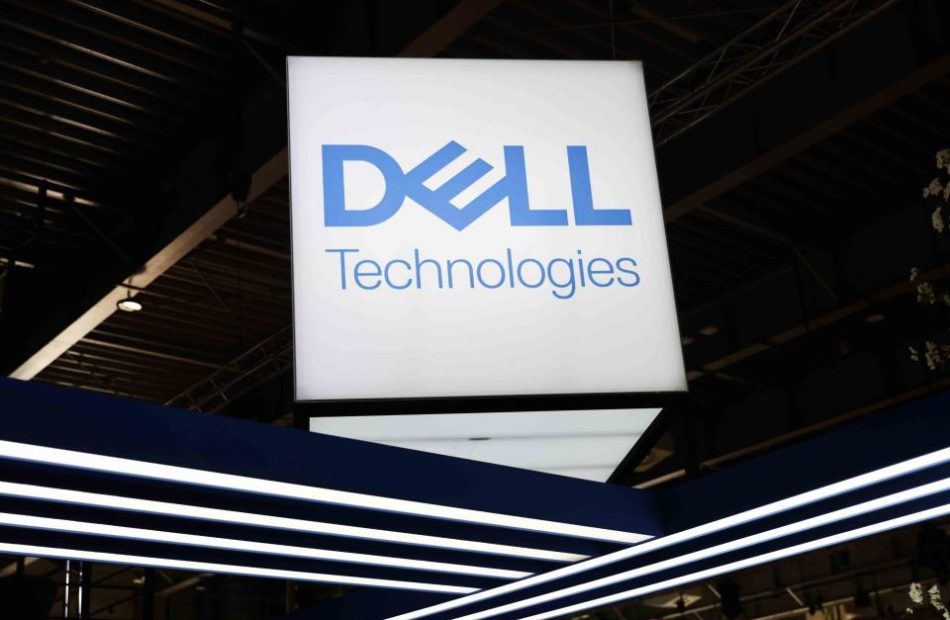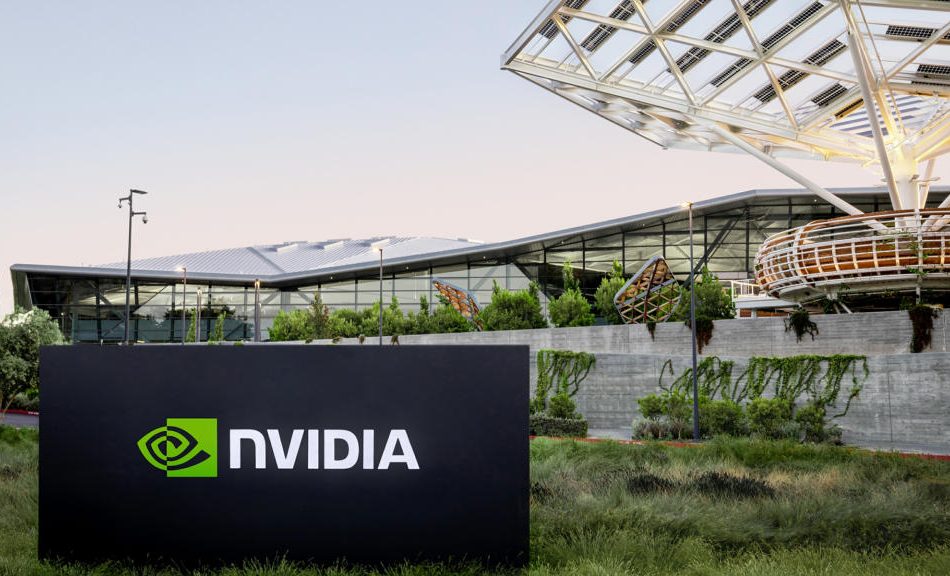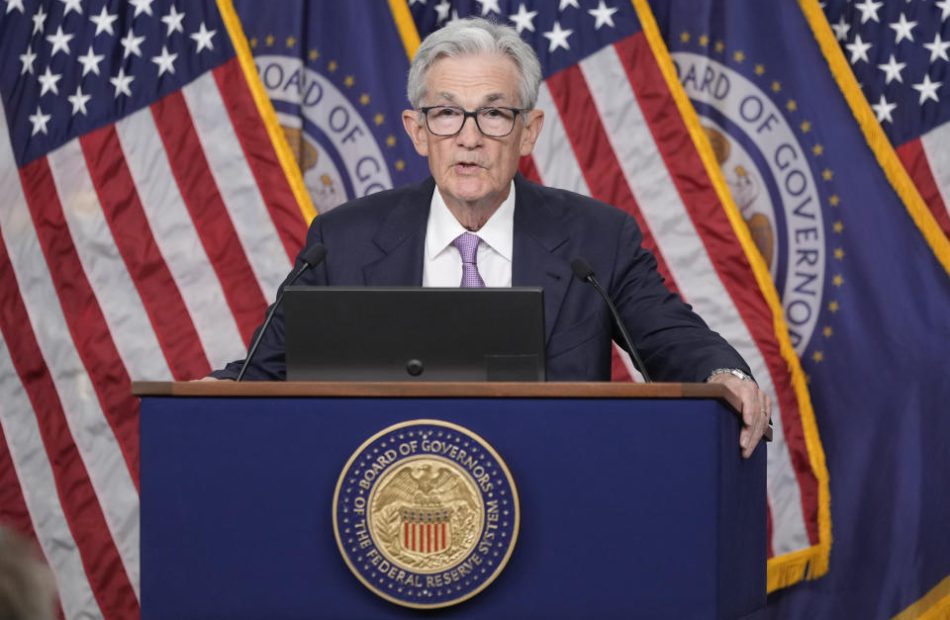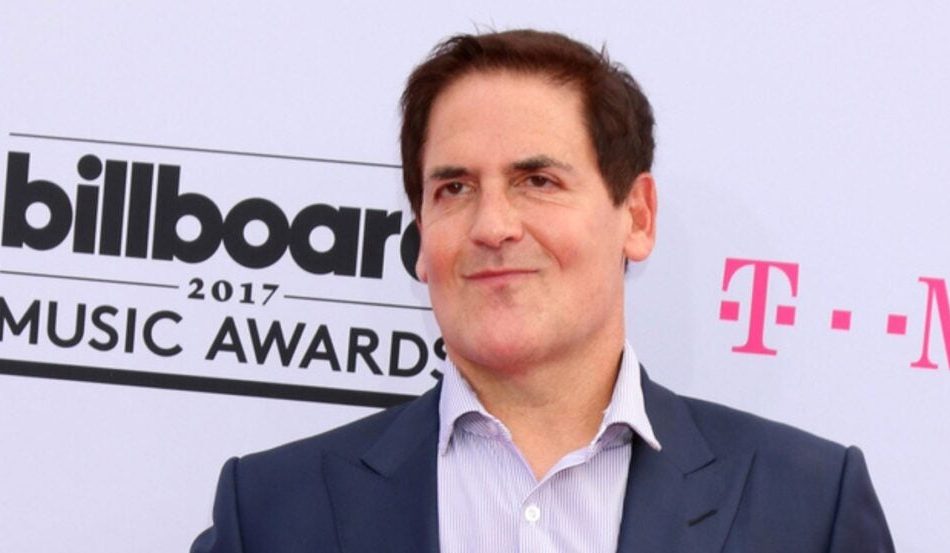At 65, With $120k Left on Our Mortgage, Should We Use Our $650k IRA to Pay It Off?
SmartAsset and Yahoo Finance LLC may earn commission or revenue through links in the content below.
Should you prioritize debt or savings? This is one of the most common questions in household finance, and it comes up particularly in the field of retirement savings. For this example, let’s say you have a $650,000 IRA and a $120,000 mortgage. As you approach retirement, should you leave that money invested or pay off the mortgage?
Do you have financial planning questions? Speak with a fiduciary financial advisor today.
What Are Your Financial Goals?
The first thing to consider is why you want to pay off your mortgage. For instance, do you want to eliminate monthly payments from your budget, or are you trying to retire with as few commitments as possible? On the other hand, are you looking to maximize the value of your money? Maybe this is part of your estate plan and you’re hoping to leave an unencumbered property to your heirs someday? Or is this an emotional decision, as you simply don’t like the idea of retiring with debt?
Whatever your goals are will ultimately inform your strategy selection.
Many retirees hope to maximize their flexibility in retirement, allowing them to change their lifestyle and expenses at will. In this case, paying off your mortgage might be a wise personal move. Conversely, you might be trying to maximize dollar-value, trying to get the most out of your money. As we discuss below, in that case you may want to review the value of this debt against the value and risks of your portfolio returns.
Interest vs. Returns
The quick rule of thumb is to compare your mortgage rate with your IRA’s historical return rate. More specifically, if your mortgage rate is higher than your portfolio’s average return, you may want to pay off the debt. But if your returns are higher than your mortgage rate, you may want to prioritize your savings, while continuing nominal payments.
For example, say your portfolio is currently averaging an 8% return and your mortgage rate is 3%. By investing your money over at that potential 8% return, you’re gaining 5% more than you’re losing by paying 3% on your mortgage. That means investing is technically giving you more for your dollar than you would save by paying off the mortgage.
Beyond rates, consider the position of your mortgage. With a newer mortgage, most of your payments are likely going toward interest and paying it off early will save you more money in the long run. With an older note, each payment will go more towards principal and you’ll get less value out of accelerated payments. A financial advisor can help you evaluate the tradeoffs in your situation.
Other Considerations for This Decision
Another important issue is cash flow. If you repay this mortgage early you will reduce your savings and, as a result, diminish your portfolio’s ability to produce income. If you don’t repay the mortgage, your portfolio will generate more money, but part of it will go to this fixed expense.
Review how each version of this plan would work. After taking your income and paying your bills, how much will you have left over? How does each version of these numbers meet your financial plans for retirement?
Finally, you’ll want to consider how this fits into your overall tax and investment plans.
If you itemize your taxes, mortgage payments are effectively reduced by the mortgage interest deduction. This probably won’t change the numbers significantly, as most households just take the standard deduction. However, it can be particularly valuable for a relatively new mortgage with higher interest payments.
Beyond that, how do you plan on changing your investment strategy as you enter retirement? Many, if not most, households shift to a more conservative approach once they hit retirement. That tends to create more security, but lower returns. Consider how that will affect your cash flow and the value of your returns against the mortgage rate.
At the same time, if you’ve decided to pursue income-based investments, think carefully before liquidating these assets. An income portfolio depends on strong principal to fuel its relatively low-rate/high-security assets. The more of your savings you spend on debt, the less income you will subsequently have.
Finally, consider your risk tolerance. Prioritizing returns over debt is a strategy that accepts some degree of risk. You will always benefit by paying off debt, and there’s always the chance that even safe assets will lose their value. While you can mitigate this risk by holding safer assets, make sure you have considered it.
Mortgage Tips
-
A financial advisor can help you build a financial plan that accounts for your retirement, a mortgage and more. Finding a financial advisor doesn’t have to be hard. SmartAsset’s free tool matches you with up to three vetted financial advisors who serve your area, and you can have a free introductory call with your advisor matches to decide which one you feel is right for you. If you’re ready to find an advisor who can help you achieve your financial goals, get started now.
-
Paying off your mortgage early is potentially beneficial way to manage wealth. It lowers your interest rates and frees up cash for additional investing. However, if you are looking to manage cash flow, here are some methods for lowering your mortgage payments.
-
Keep an emergency fund on hand in case you run into unexpected expenses. An emergency fund should be liquid — in an account that isn’t at risk of significant fluctuation like the stock market. The tradeoff is that the value of liquid cash can be eroded by inflation. But a high-interest account allows you to earn compound interest. Compare savings accounts from these banks.
-
Are you a financial advisor looking to grow your business? SmartAsset AMP helps advisors connect with leads and offers marketing automation solutions so you can spend more time making conversions. Learn more about SmartAsset AMP.
Photo credit: ©iStock.com/Wasan Tita, ©iStock.com/Downrung Thongphasuk
The post We’re 65, Have $120k Left on Our Mortgage and an IRA Worth $650k. Should We Pay Off the Mortgage? appeared first on SmartReads by SmartAsset.
How Does Your Retirement Savings Compare To The Average 'Upper Class' Nest Egg? Here's What The Top 20% Have Saved
Are you on track for a comfortable retirement or falling behind? The numbers might surprise you.
According to data from the Federal Reserve analyzed by The Motley Fool, the top 10% of Americans – those in the 90th to 100th net worth percentiles – have a median retirement savings of $900,000. That’s a pretty solid cushion. Meanwhile, those in the 75th to 89.9th percentiles come in with a median savings of $269,000.
Don’t Miss:
But what exactly qualifies as “upper class?” While there’s no set definition, being in the top 20% by income often puts you in that category. If you’re earning around $145,000 or more annually, you might be part of that group depending on where you live.
When looking at the numbers, it’s easy to feel discouraged if your retirement savings aren’t quite there yet, but keep in mind that these are median figures. That means half of the people in these groups have saved more and half have saved less. What matters is that you’re steadily saving and investing toward your future.
Trending: Founder of Personal Capital and ex-CEO of PayPal re-engineers traditional banking with this new high-yield account — start saving better today.
Interestingly, the wealthiest Americans aren’t just saving more – they’re seeing their retirement savings grow much faster. Since 1989, the top 10% has seen their retirement savings increase by 713.24%. That’s the power of compound interest in action.
For the rest of the country, the median retirement savings for all households is about $87,000. The median is much lower if you’re under 35, at $18,800. So if you’re doing better than these numbers, you’re already ahead of the game.
One major reason the upper class continues to grow its savings is its investments. The top 10% of households own nearly 87% of stocks, which shows how critical investing is for long-term growth.
Looking to grow your retirement savings? Here are a few strategies:
Save regularly: Set aside a portion of each paycheck specifically for retirement.
Max out your 401(k): Use any employer matching program.
Trending: The number of ‘401(k)’ Millionaires is up 43% from last year — Here are three ways to join the club.
Open an IRA: This provides more tax benefits and investment flexibility.
Diversify your portfolio: Spread your investments across different asset types.
Increase your savings rate: As your income grows, aim to boost your savings rate.
Remember, retirement planning is a long-term process. The earlier you start saving and investing, even with small amounts, the more time compound interest has to work in your favor.
Retirement goals also vary based on lifestyle, location and personal preferences. For instance, someone in Northwest Arkansas might need less to live comfortably than someone in Washington D.C. or California.
Ultimately, the focus should be on your financial journey and goals. With steady effort and smart financial choices, you can work toward a comfortable retirement no matter where you start.
Read Next:
Up Next: Transform your trading with Benzinga Edge’s one-of-a-kind market trade ideas and tools. Click now to access unique insights that can set you ahead in today’s competitive market.
Get the latest stock analysis from Benzinga?
This article How Does Your Retirement Savings Compare To The Average ‘Upper Class’ Nest Egg? Here’s What The Top 20% Have Saved originally appeared on Benzinga.com
© 2024 Benzinga.com. Benzinga does not provide investment advice. All rights reserved.
Bitcoin Worth $63,000 Pulled In $33 Pack Of Trading Cards At GameStop: 'Mind-Boggling' Story Goes Viral, Highlights Crypto Redemption Card
With a change in its business practices, GameStop Corporation (NYSE:GME) allows CEO Ryan Cohen the ability to buy and sell stocks and cryptocurrency with the company’s cash.
While GameStop hasn’t added Bitcoin (CRYPTO: BTC) to its balance sheet yet, the company did help one customer turn a small purchase into a full BTC worth over $60,000.
What Happened: The Cardsmiths Currency Series 1 trading card series, launched in 2022, features influential people to the cryptocurrency sector, memes and artifacts. The set also includes randomly inserted redemption codes that are available to trade for various amounts of Bitcoin, Ethereum (CRYPTO: ETH), Litecoin (CRYPTO: LTC) and Dogecoin (CRYPTO: DOGE).
Don’t Miss:
A GameStop customer found one of the redemption cards previously and upon scratching it off last month, realized he had one of the rarest cards good to redeem for one full Bitcoin. This turned his initial $33 purchase for the pack of cards into a Bitcoin worth more than $60,000.
The consumer shared his findings in a post on Reddit, with the action now going viral thanks to GameStop tweeting about the unique story.
“A GameStop customer found 1 Bitcoin in a trading card pack,” GameStop tweeted.
According to the Reddit post, the user said they thought the unscratched redemption card “looked better in the binder.”
Trending: Groundbreaking trading app with a ‘Buy-Now-Pay-Later’ feature for stocks tackles the $644 billion margin lending market – here’s how to get equity in it with just $500
Later upon scratching off the card, the card owner thought the redemption card was good for a part of a whole Bitcoin before realizing that it was for one BTC.
“This is mind boggling to me honestly,” the owner said.
The user did admit to have previously buying and opening 10 to 12 boxes of the Cardsmiths Currency Series 1 trading cards.
Read Also: GameStop Q2 Earnings Highlights: Revenue Miss, EPS Beat, Cash Update And More
Why It’s Important: The price of Bitcoin was around $16,500 when the series 1 currency trading card set was released, as reported by Cllct.
Another GameStop purchaser also found a Bitcoin redemption card back in March, but the number of unredeemed full Bitcoin cards could be 0 or 1 now, according to the report.
The company behind the Cardsmiths Currency Trading Cards said the set offered the “industry-first cryptocurrency redemption program.”
Series 1 of the set is believed to have had five Bitcoin redemption cards. The company’s CEO said earlier this year that there were only a couple unredeemed BTC cards according to a user on the Reddit thread, which could suggest that the two pulled at GameStop were the last ones.
Trending: One trailblazing female with an expertise in renewable energy built a company that’s bringing the EV revolution to disadvantaged communities — here’s how you can invest at just $500
The recent tweet will likely put increased attention on the currency trading cards and also GameStop’s recent push into trading cards in stores and online.
GameStop’s website currently lists several Cardsmiths items for sale including:
-
Series 3 Collectors Box 2-Pack: $36.99
-
Series 3 Mega Box (40 Cards): $105.99
-
Series 2 Collectors Box 2-Pack: $30.00
-
Series 1 Collectors Box 2-Pack: $31.99
While the full Bitcoin redemption cards from series 1 could be completely gone, each series has redemption cards for various amounts of Bitcoin, Ethereum, Litecoin and Dogecoin.
For Series 1, the odds of getting a cryptocurrency redemption code was listed at 1:96 packs.
GME, BTC Price Action: GameStop stock trades at $19.62 versus a 52-week trading range of $9.95 to $64.83. GameStop stock is up 17.7% year-to-date in 2024.
Bitcoin trades at $63,688.18, up 5% over the last 24 hours. Bitcoin has traded between $26,011.47 to $73,750.07 over the last 52-weeks and is up 43.8% year-to-date in 2024.
Read Next:
UNLOCKED: 5 NEW TRADES EVERY WEEK. Click now to get top trade ideas daily, plus unlimited access to cutting-edge tools and strategies to gain an edge in the markets.
Get the latest stock analysis from Benzinga?
This article Bitcoin Worth $63,000 Pulled In $33 Pack Of Trading Cards At GameStop: ‘Mind-Boggling’ Story Goes Viral, Highlights Crypto Redemption Card originally appeared on Benzinga.com
© 2024 Benzinga.com. Benzinga does not provide investment advice. All rights reserved.
Palantir and Dell Are Set to Join the S&P 500 Monday. Here's What That Means.
Key Takeaways
-
Dell and Palantir are set to join the S&P 500 on Monday as part of the index’s quarterly rebalancing.
-
Erie Indemnity also is joining the S&P 500. American Airlines Group, Etsy, and Bio-Rad Laboratories are being shifted to smaller indexes.
-
The exposure associated with inclusion in major indees, as well as buying from index funds tracking the benchmarks, can support companies’ stocks.
The S&P 500 gets three new members Monday, with Palantir Technologies (PLTR), Dell Technologies (DELL) and Erie Indemnity (ERIE) set to join the benchmark index.
The trio will replace American Airlines Group (AAL), Etsy (ETSY), and Bio-Rad Laboratories (BIO). American Airlines and Bio-Rad will be part of the S&P MidCap 400 index, while Etsy will join the S&P SmallCap 600 index.
S&P Global announced the moves, part of its quarterly rebalancing, two weeks ago. It periodically shifts companies between its indexes to ensure they are accurately represented in terms of their market capitalization.
Jakub Porzycki / NurPhoto via Getty Images
What S&P 500 Inclusion Can Mean
Companies often get a boost when their stock is added to a major index like the S&P 500, as the inclusion exposes them to a wider group of investors who could become aware of a company through an index.
The stock could also get a boost as its shares start to be included in index funds, which look to mirror the performance of a broader index by including shares of the companies included in it.
Shares of Dell closed Friday down 0.2%, while and Palantir rose 1%. Both shares have moved higher overall over the past two weeks since the announcement was made, as have shares of Erie, which fell 1% Friday.
Read the original article on Investopedia.
2 Stock-Split Stocks to Buy Before 2025
Companies that split their stocks are usually experiencing phenomenal growth that has sent their share price soaring. It’s not uncommon to see a fast-growing company issue multiple stock splits over several years. For example, leading chip supplier Nvidia (NASDAQ: NVDA) has split its stock six times in the last 25 years, with two since 2021.
The most common type of split is a forward stock split in which the goal of the company is to make its share price more affordable for investors. Keep in mind, a stock split gives you more shares, but the share price is also reduced so that the value of your investment remains the same after the split.
Stock splits alone are not a good reason to invest in a company. It still comes down to looking at a company’s growth and future opportunities. If the stock is trading at a reasonable price relative to that growth, you’ve got a winner on your hands. Here are two growth stocks that recently issued a 10-for-1 split you can buy today with less than $200.
1. Nvidia
Nvidia has been one of the best-performing stocks over the last 10 years. The shares are up 24,000% since 2014. The company has split its stock twice in the last five years: a 4-for-1 split in 2021 followed by a 10-for-1 split in June of this year, bringing its share price to a more affordable $118.
The stock has been choppy over the last month as investors focus on near-term hurdles to growth. Nvidia is launching its Blackwell GPU architecture later than Wall Street expected. Nvidia is also dealing with export restrictions and increasing competition in China, although its China business grew sequentially last quarter.
Some of Nvidia’s largest customers in the U.S. are making their own chips for artificial intelligence (AI) workloads, including Amazon Web Services (AWS). There is growing demand for alternatives since Nvidia’s graphics processing units (GPUs) have been in short supply and command high selling prices.
Despite these risks, Nvidia’s revenue grew 122% year over year in the fiscal second quarter. There is currently no replacement for the general-purpose computing power of Nvidia’s GPUs. This is why Amazon and other cloud service providers are expected to adopt Blackwell next year, which can run large language models (LLMs) significantly faster and at lower cost than previous-generation chips.
Nvidia expects fiscal Q3 revenue to be up approximately 79% over the year-ago quarter. Management sees the enterprise AI wave gaining momentum across various industries, and this should lead to strong demand for Blackwell starting in fiscal Q4.
Analysts currently expect Nvidia’s earnings to increase 40% to $3.99 next year. Assuming Nvidia stock is trading at the same price-to-earnings (P/E) ratio, the stock could reach $200 by the end of 2025, representing an upside of 69%.
2. Broadcom
Broadcom (NASDAQ: AVGO) is another chip stock that has delivered exceptional returns to investors in recent years. This leading supplier of networking and software solutions for data centers issued a 10-for-1 forward split on July 15, bringing its share price down to $167.
Broadcom is well-positioned for long-term growth in the AI market. It started investing in AI around 10 years ago, and it’s paying off. In Q2, revenue from custom AI accelerators grew over threefold compared to the year-ago quarter.
Another catalyst that should benefit the stock is Broadcom’s smartphone business. It has been a key component supplier for Apple. As part of Apple’s commitment to invest $430 billion in the U.S. economy over the next five years, it made a long-term deal with Broadcom in 2023 to supply wireless connectivity and other components for Apple devices.
Broadcom could see modest upside from Apple’s iPhone 16 over the next year. Apple is expected to experience strong demand for its new iPhones, given that customers with older phones will need to upgrade to take advantage of new AI features coming to iOS. Broadcom expects 20% sequential growth in wireless revenue in Q4.
Analysts are high on Broadcom right now, since some of the risks to the business have already materialized, such as the recent sluggishness in smartphone sales. Plus, it’s got great exposure to the growth in AI infrastructure, which bodes well for its long-term prospects.
The stock is trading at a forward P/E of 27 on next year’s earnings estimate, and analysts expect the company to post annualized earnings growth of 19% over the long term. The stock should deliver excellent returns for years to come.
Should you invest $1,000 in Nvidia right now?
Before you buy stock in Nvidia, consider this:
The Motley Fool Stock Advisor analyst team just identified what they believe are the 10 best stocks for investors to buy now… and Nvidia wasn’t one of them. The 10 stocks that made the cut could produce monster returns in the coming years.
Consider when Nvidia made this list on April 15, 2005… if you invested $1,000 at the time of our recommendation, you’d have $710,860!*
Stock Advisor provides investors with an easy-to-follow blueprint for success, including guidance on building a portfolio, regular updates from analysts, and two new stock picks each month. The Stock Advisor service has more than quadrupled the return of S&P 500 since 2002*.
*Stock Advisor returns as of September 16, 2024
John Mackey, former CEO of Whole Foods Market, an Amazon subsidiary, is a member of The Motley Fool’s board of directors. John Ballard has positions in Nvidia. The Motley Fool has positions in and recommends Amazon, Apple, and Nvidia. The Motley Fool recommends Broadcom. The Motley Fool has a disclosure policy.
2 Stock-Split Stocks to Buy Before 2025 was originally published by The Motley Fool
Fed's preferred inflation gauge and second quarter GDP: What to know this week
The rate cut that everyone was waiting for finally arrived. Markets offered a resoundingly positive response to the end of the Federal Reserve’s tightening campaign. But the euphoria was only fleeting. Friday’s trading brought fresh concerns over corporate earnings and economic growth.
Stocks, however, still posted overall wins for the week. The S&P 500 (^GSPC) ended the week up about 1.4%. The Dow Jones Industrial Average (^DJI) put on 1.6%, while the Nasdaq Composite (^IXIC) gained 1.5%. While Friday brought down the S&P, the index notched an all-time high earlier in the week and the Dow closed with a record.
The biggest question for investors this upcoming week is whether a new batch of data supports Fed Chair Jerome Powell’s assertion that the US economy remains strong. A second quarter GDP reading due Thursday will help test that contention.
Fed Chair Jerome Powell was also careful not to declare a victory over inflation as pricing pressures continue to come down. Friday’s scheduled release of the Personal Consumption Expenditures (PCE) index, the Fed’s preferred inflation gauge, will offer another progress report on that front.
Quarterly earnings reports from Costco (COST), Micron (MU), and Accenture (ACN) are also on deck.
What’s next for the Fed?
The quiet period is over and so is the tightening. The public is set to receive fresh commentary from Fed officials in the days after the momentous shift away from a restrictive monetary policy. Perhaps the biggest question for policymakers is, where do we go from here?
At least eight central bank officials, including Powell, Federal Reserve vice chair for supervision Michael Barr, and New York Fed chief John Williams, are scheduled to offer speeches or participate in conferences in the days ahead, likely giving color to the Fed’s decision to cut interest rates by 50 basis points. Fed members see two more 25 basis point cuts this year, followed by four more in 2025.
Powell has said the central bank was not playing catch-up in opting for a larger rate cut, addressing criticism that the Fed should have eased rates at their last policy huddle in July. He’s also stated that cuts of 50 basis points shouldn’t be thought of as the new norm. But a greater slowdown in the labor market could challenge both of his contentions.
Read more: The Fed rate cut: What it means for bank accounts, CDs, loans, and credit cards
The new risks and the old
Inflation was so high and the job market so tight that curbing price increases was the Fed’s sole focus over the last two years. But now that inflation is cooling and the job market showing signs of slowing, the Fed has to advance its mandate on both fronts.
On Wednesday Powell noted the upside risks to inflation have diminished while the downside risks to employment have increased. “We know it is time to recalibrate our policy,” he said, confirming that the balance of risks is “now even.”
Analysts expect Friday’s PCE reading to come in at 2.3% year over year, down from the prior month’s 2.5% annual increase, according to Bloomberg data. Such a favorable metric would continue a downward climb and affirm the Fed’s decision making.
But even as more eyes are on the labor market, the Fed still hasn’t met its inflation goal of 2%. And as central bankers have reiterated, stepping off the brakes too early could allow heightened inflation to pick back up.
As Bank of America Global Research analysts put it in a note on Friday, “With above-potential growth, a strong consumer, and a record-breaking stock market, such a bold start to an easing cycle is hard to justify if a recession isn’t imminent.”
“Unless the Fed is seeing something that we are missing, a more aggressive easing cycle could make reaching the 2% target harder considering uncertainty ahead, including the aftermath of US elections,” they wrote.
Tech stock reset
Tech investors have been on the hunt for their next catalyst, and the Fed may have just handed it to them. After a mixed earnings season where Wall Street largely soured on massive AI spending and flashed impatience for less-than-perfect quarters, the rate-sensitive sector could revert back to growth mode.
All but one of the “Magnificent Seven” stocks posted gains last week, with Meta (META), Apple (AAPL), Alphabet (GOOG, GOOGL), Amazon (AMZN), Microsoft (MSFT), and Tesla (TSLA) all outpacing the broader market. Nvidia (NVDA), the sole loser, shed more than 2% last week as it grapples with volatility after a stunning spring and summer rise. Still, some analysts see a more nuanced picture. As Citi head of US equity strategy Scott Chronert warned, the upside of even the most high-flying tech stocks is limited as the ability to match their prior growth becomes more difficult.
Weekly Calendar
Monday
Economic data: S&P Global US Services PMI, September (48.5 expected, 47.9 previously); Chicago Fed Nat Activity Index, August (-.20 expected, -0.34 previously)
Earnings: No notable earnings
Tuesday
Economic data: S&P CoreLogic Case-Shiller, 20-City Composite home price index, month over month, July (0.42% previously); S&P CoreLogic Case-Shiller, 20-City Composite home price index, year over year, July (6.47% previously); Conference Board Consumer Confidence, September (102.8 expected, 103.3 previously)
Earnings: AutoZone (AZO), Thor (THO), KB Home (KBH), Worthington (WOR), Stitch Fix (SFIX)
Wednesday
Economic data: MBA Mortgage Applications, week ending September 20 (14.2% prior); New home sales, August (693,000 expected, 739,000 prior); New home sales month over month, August (-6.3% expected, 10.6% previously)
Earnings: Micron (MU), Jefferies (JEF), Cintas (CTAS)
Thursday
Economic data: Second quarter GDP, second revision (+2.9% annualized rate expected, +3% previously); Second quarter personal consumption, second revision (+2.9% previously); Initial jobless claims, week ended Sept. 21 (219,000 previously); Durable goods orders, August (-2.9% expected, 9.8% previously)
Earnings: Costco (COST), Accenture (ACN), BlackBerry (BB), CarMax (KMX), Jabil (JBL)
Friday
Economic data: University of Michigan consumer sentiment, September final (69 prior)
PCE inflation, month over month, August (+0.1% expected, +0.2% previously); PCE inflation, year over year, August (+2.3% expected, +2.5% previously); “Core” PCE, month over month, August (+0.2% expected, +0.2% previously); “Core” PCE, year over year, January (+2.7% expected; +2.6% previously)
Earnings: No notable earnings
Click here for in-depth analysis of the latest stock market news and events moving stock prices
Read the latest financial and business news from Yahoo Finance
Mark Cuban Issues A Stinging Retort To Bill Ackman's Attack On Kamala Harris: 'She Is Kicking Your A**…'
“Shark Tank” fame billionaire Mark Cuban recently slammed hedge fund manager and founder of Pershing Square Capital Management Bill Ackman’s views on the candidacy of Kamala Harris.
What Happened: Cuban responded to a post by Bill Ackman, which criticized Harris’s candidacy and the circumstances surrounding her rise to the presidential nominee position. Ackman accused Harris of being complicit in what he called “the greatest lie ever told to the American people by our government,” referring to the health status of former President Joe Biden.
Ackman also expressed his disappointment with Harris’s campaign strategy, accusing her of evading direct questions about the economy, the border, or foreign policy. He suggested that her campaign was a blatant attempt to say what she needs to say to get elected.
Cuban said in response: ‘When the competition hires a new CEO and she is kicking your a** …’
Why It Matters: Cuban’s critical response to Ackman’s thread comes amidst a surge in Harris’s popularity Recent polls suggest a slight advantage for Harris over Trump, with a Morning Consult poll showing Harris leading by 6 percentage points nationwide.
Notably, Cuban, a supporter of the vice president, had previously expressed some skepticism about Harris’s economic proposals. In August, he engaged in a storm of posts about Harris’s economic plans, particularly around the issue of price controls.
Cuban’s relationship with Donald Trump, the other presidential candidate, has been complicated. He once referred to Trump as a “snake oil salesperson,” but admitted they were once on good terms, with the former president even seeking his advice on stocks at one point.
Photo courtesy: Shutterstock
Did You Know?
This story was generated using Benzinga Neuro and edited by Shivdeep Dhaliwal
Market News and Data brought to you by Benzinga APIs
© 2024 Benzinga.com. Benzinga does not provide investment advice. All rights reserved.
Microsoft Goes Nuclear. Here Are the Biggest Beneficiaries of Its Massive Power Grab.
Microsoft (NASDAQ: MSFT) is investing heavily in building out data centers to support the growth of its cloud computing and artificial intelligence (AI) operations. Those facilities require tremendous power, especially when used for AI. For example, AI applications like ChatGPT require 10 times the electricity to process a search query compared to a typical Google search.
That’s leading Microsoft to secure power to support its growth ambitions. It recently signed a deal to buy nuclear energy produced by Constellation Energy (NASDAQ: CEG). It also signed a massive renewable energy deal with Brookfield Renewable (NYSE: BEPC)(NYSE: BEP). These agreements will help ensure Microsoft has the power it needs to thrive in the future.
Going nuclear
Microsoft recently signed a 20-year power purchase agreement (PPA) with leading nuclear energy producer Constellation Energy. The deal will help launch the Crane Clean Energy Center by restarting Three Mile Island Unit 1. The company had shut down that unit five years ago for operational and economic reasons. It will now bring it back online to supply Microsoft’s data centers with carbon-free energy for decades to come.
Constellation Energy expects the restarted nuclear-generating unit, renamed after its former CEO, to begin producing power by 2028. It will mark the country’s first-ever restart of a previously retired nuclear power plant. The company plans to invest about $1.6 billion to bring the plant back online.
It would have the capacity to generate 835 megawatts (MW) of carbon-free electricity and could operate through at least 2054. The 20-year agreement for capacity at the revamped Crane Clean Energy Center is the largest-ever PPA signed by Constellation Energy. It will supply the power company with steady income for the next two decades.
Three Mile Island Unit 1 is next to the notorious Unit 2, which shut down in 1979 after a partial meltdown. That accident, the most famous one in the country, didn’t impact Unit 1. Constellation Energy won’t restart that second unit.
Tapping into Microsoft’s need for power
Constellation Energy isn’t the only company benefiting from Microsoft’s need for power. The tech titan signed a massive collaboration agreement with Brookfield Renewable in May. The deal will see the leading global renewable energy producer deliver over 10.5 gigawatts (GW) of new renewable power capacity by 2030.
That agreement is the largest corporate PPA ever signed, nearly eight times bigger than the prior record. It provides a pathway for Brookfield to build and deliver 10.5 GW of new renewable energy capacity in the U.S. and Europe to support Microsoft’s cloud and AI expansions while helping it achieve its goal of having 100% of its power come from zero-carbon energy by 2030. It builds on their existing agreements where Brookfield is supplying Microsoft with nearly 1 GW of power capacity.
While that deal initially covers renewable energy in the U.S. and Europe, it could expand to other regions, like Asia-Pacific, India, and Latin America, where Brookfield also has a strong operating presence. Further, it will focus beyond wind and solar to include new or impactful carbon-free energy-generation technologies.
Meanwhile, Microsoft’s support for nuclear energy could also benefit Brookfield. While it doesn’t operate nuclear power facilities, it has investments in Westinghouse, a leading global nuclear services business. Westinghouse could help restart dormant nuclear power plants and build new nuclear capacity, such as small modular reactors.
Powerful growth potential
The next two decades will be an unprecedented period for electricity buildout globally to support the growth of cloud computing, AI, electric vehicles, and other demand drivers. Microsoft is ensuring it stays ahead of this curve by grabbing as much power as possible to support its growth ambitions. That’s fueling growth for Constellation Energy and Brookfield Renewable, which should expand briskly for years to come, making them great stocks to buy for those seeking to capitalize on the coming power boom.
Should you invest $1,000 in Microsoft right now?
Before you buy stock in Microsoft, consider this:
The Motley Fool Stock Advisor analyst team just identified what they believe are the 10 best stocks for investors to buy now… and Microsoft wasn’t one of them. The 10 stocks that made the cut could produce monster returns in the coming years.
Consider when Nvidia made this list on April 15, 2005… if you invested $1,000 at the time of our recommendation, you’d have $710,860!*
Stock Advisor provides investors with an easy-to-follow blueprint for success, including guidance on building a portfolio, regular updates from analysts, and two new stock picks each month. The Stock Advisor service has more than quadrupled the return of S&P 500 since 2002*.
*Stock Advisor returns as of September 16, 2024
Suzanne Frey, an executive at Alphabet, is a member of The Motley Fool’s board of directors. Matt DiLallo has positions in Alphabet, Brookfield Renewable, and Brookfield Renewable Partners. The Motley Fool has positions in and recommends Alphabet, Brookfield Renewable, Constellation Energy, and Microsoft. The Motley Fool recommends Brookfield Renewable Partners and recommends the following options: long January 2026 $395 calls on Microsoft and short January 2026 $405 calls on Microsoft. The Motley Fool has a disclosure policy.
Microsoft Goes Nuclear. Here Are the Biggest Beneficiaries of Its Massive Power Grab. was originally published by The Motley Fool
‘We have no health insurance’: My wife died, leaving behind a lot of medical debt. Am I responsible?
Dear Quentin,
My wife passed away after an extended hospital stay. She had absolutely no assets, but our home is in both our names. Am I responsible for her medical debt? Can they take our house? (We have no health insurance.)
Left Behind
Most Read from MarketWatch
Dear Left Behind,
I’m sorry that you lost your wife after such a long stay in the hospital. Having this debt hanging over you only makes a traumatic situation worse. You and your wife are not alone in being uninsured; approximately 26 million Americans, or 7.7% of the population, have no health insurance.
What happens with her medical debt will depend on your state and, to a lesser degree, your negotiation skills. Medical bills are a peculiar beast: Unpaid medical bills only affect your credit score if they are over $500, and U.S. states take various approaches to whether such bills are shared between spouses.
“Most states (33) do not limit hospitals, collections agencies, or debt buyers from placing a lien or foreclosing on a patient’s home to recover on unpaid medical bills,” according to the Commonwealth Fund, a private U.S. foundation focused on the healthcare system.
Homestead exemption
Almost all states, however, have a homestead exemption, which protects some equity in a debtor’s home from being seized by creditors. “The amount of homestead exemption available to debtors varies from state to state, ranging from just $5,000 to the entire value of the home,” the Commonwealth Fund states.
“Seven states have unlimited homestead exemptions, allowing debtors to fully shield their primary homes from creditors,” it says. “Additionally, Louisiana offers an unlimited homestead exemption for certain uninsured, low-income patients with at least $10,000 in medical bills.”
It adds: “Eleven states prohibit or set limits on liens or foreclosures for medical debt. For example, New York and Maryland fully prohibit both liens and foreclosures because of medical debt, while California and New Mexico only prohibit them for certain low-income populations.”
When a person dies, their medical debt is paid by the estate, which may come out of your pocket, too. “In essence, you may not have to directly pay for your spouse’s medical bills, but you can still be affected by them,” says the Artemis Family Law Group in Orlando, Fla.
“Many people are under the impression that they will not have to pay for their spouse’s medical bills by simply refusing to sign any documents that would make them a responsible party to the medical bills,” it adds. “However, this is not a complete shield in every case.”
What if the medical bill was paid using a joint credit card? “The credit-card company would not care that you did not sign off as being a responsible party. The credit-card company will most likely hold you and the spouse incurring the medical bills jointly liable for the debt,” it adds.
To make things more complicated: In community-property states such as Arizona, California, Idaho, Louisiana, Nevada, New Mexico, Texas, Washington and Wisconsin, assets and debts incurred during the marriage are generally regarded as marital property (although laws vary).
No. 1 cause of bankruptcy
Medical debt is the No. 1 cause of bankruptcy in the U.S., with some studies putting it at anywhere between 45% and 60% of total filings, despite the fact that nearly half of the U.S. population has employer-sponsored health insurance.
I point this out in order to cast some light on your wife’s situation. You may benefit from contacting the National Foundation for Credit Counseling, a nonprofit financial-counseling organization.
Millions of Americans are either one paycheck away from losing their home or one medical crisis away from bankruptcy. More than 500,000 families go bankrupt each year due to medical reasons, according to one estimate. It’s a big problem.
A study in the American Journal of Public Health concluded that bankruptcy is most common among middle-class Americans, who shoulder increasing copayments and deductibles despite the Obama-era Affordable Care Act.
Lower-income Americans “less frequently seek formal bankruptcy relief because they have few assets — such as a home — to protect and face particular difficulty in securing the legal help needed to navigate formal bankruptcy proceedings,” the researchers found.
Negotiating a debt
As for negotiating a debt, Equifax has some tips. “When dealing with a collection agency, start your negotiations low. Start by offering cents on every dollar you owe, say around 20 to 25 cents, then 50 cents on every dollar, then 75,” it says.
“Before fulfilling any payment agreement you negotiate with a debt collector, make sure you get the terms in writing,” the credit bureau adds. “Then, after your debt is paid off, request a written confirmation that you have settled your debt.”
Your question is a short one, but the answer is complicated. Depending on the size of the debt, it may be worth consulting an attorney to help you. As I said, you can always negotiate. You may not be successful, but it’s definitely worth a shot.
More columns from Quentin Fottrell:




